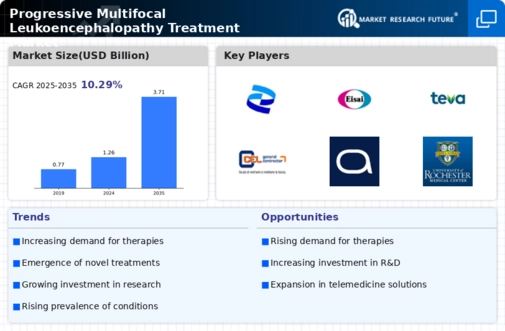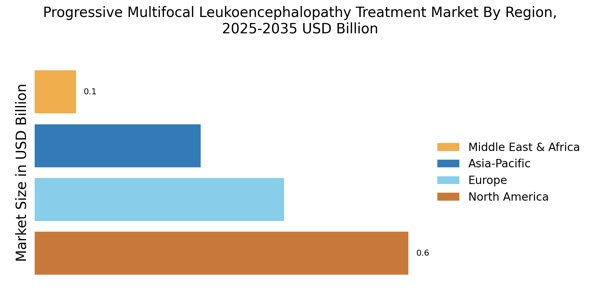Growing Patient Population
The Progressive Multifocal Leukoencephalopathy Treatment Market is significantly influenced by the growing patient population. As the prevalence of conditions that lead to immunosuppression, such as HIV/AIDS and certain cancers, rises, the incidence of PML is expected to increase correspondingly. Current estimates indicate that PML affects approximately 4 to 7% of patients with HIV, highlighting a substantial patient base requiring effective treatment options. This demographic shift is likely to drive demand for innovative therapies and increase investment in research and development. Consequently, pharmaceutical companies are focusing on creating targeted treatments to address the specific needs of this expanding patient population, thereby enhancing the overall market landscape.
Advancements in Biotechnology
The Progressive Multifocal Leukoencephalopathy Treatment Market is experiencing a surge in advancements in biotechnology. Innovative therapies, particularly those targeting the underlying viral causes of the disease, are being developed. For instance, monoclonal antibodies and antiviral agents are gaining traction, potentially improving patient outcomes. The market is projected to grow as these therapies become more accessible, with estimates suggesting a compound annual growth rate of over 10% in the coming years. This growth is driven by the increasing number of patients diagnosed with PML, particularly among immunocompromised populations. As biotechnology continues to evolve, the treatment landscape for Progressive Multifocal Leukoencephalopathy is likely to expand, offering new hope for patients.
Increased Collaboration Among Stakeholders
The Progressive Multifocal Leukoencephalopathy Treatment Market is witnessing increased collaboration among various stakeholders, including pharmaceutical companies, research institutions, and healthcare providers. This collaborative approach is fostering innovation and accelerating the development of new treatment modalities. Partnerships are being formed to share knowledge, resources, and expertise, which is essential for tackling the complexities of PML. Such collaborations may lead to the establishment of clinical trials that explore novel therapies, thereby enhancing the treatment landscape. The pooling of resources and expertise is expected to drive advancements in the market, ultimately benefiting patients through improved treatment options.
Regulatory Support for Innovative Treatments
The Progressive Multifocal Leukoencephalopathy Treatment Market benefits from increasing regulatory support for innovative treatments. Regulatory agencies are actively encouraging the development of new therapies through expedited approval processes and incentives for orphan drugs. This support is crucial for addressing the unmet medical needs of PML patients, as traditional treatment options have been limited. The introduction of fast-track designations and priority review vouchers is likely to accelerate the availability of novel therapies. As a result, pharmaceutical companies are more inclined to invest in research and development, potentially leading to a wider array of treatment options for patients suffering from PML.
Rising Investment in Healthcare Infrastructure
The Progressive Multifocal Leukoencephalopathy Treatment Market is positively impacted by rising investment in healthcare infrastructure. Enhanced healthcare facilities and improved access to medical services are crucial for the timely diagnosis and treatment of PML. Governments and private entities are increasingly allocating funds to strengthen healthcare systems, which is likely to facilitate better patient management. This investment is expected to lead to the establishment of specialized centers for the treatment of PML, where patients can receive comprehensive care. As healthcare infrastructure improves, the overall market for PML treatments is anticipated to expand, providing patients with more effective and timely therapeutic options.


















Leave a Comment